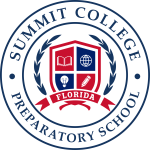Chemistry: Matter & Quantitative Reasoning
Explore atomic structure, equations, and lab analysis.
Grade 10 · 1.0 Credit · English Instruction
Chemistry: Matter & Quantitative Reasoning is a foundational high school course designed to build deep understanding of atomic structure, matter, and stoichiometry. Students will explore real-world chemical processes, balance equations, and apply quantitative analysis. This course prepares students for advanced science courses and promotes critical scientific thinking through hands-on lab investigations, mathematical applications, and the core principles of chemistry.
Grade Level: 10
Credits: 1
Delivery Format: Live Online (1:1 or Small Group)
Duration: Full Academic Year (194 instructional days)
Instructional Language: English
This Chemistry course prepares students to understand the structure, properties, and transformations of matter through quantitative reasoning and scientific investigation. Topics include atomic theory, stoichiometry, gas laws, thermodynamics, and reaction kinetics. Students apply conceptual and mathematical skills in solving real-world problems, while developing scientific literacy and accuracy in documentation.
Core Academic Content
Atomic Structure and the Periodic Table
Chemical Bonding and Molecular Geometry
Stoichiometry and the Mole Concept
Thermochemistry and Energy Transfer
Acids, Bases, and Solutions
Reaction Types and Kinetics
Gas Laws and Chemical Equilibrium
Instructional Framework
Quantitative lab-based science instruction
Real-world application of chemical principles
Meets international and national academic benchmarks
Supports multilingual, gifted, and honors-level learners
Teacher-led with structured problem-solving and documentation
Required Texts and Resources
Chemistry: The Central Science – Brown, LeMay, Bursten (or equivalent)
Interactive periodic table and scientific calculator
Instructor-guided lab simulations and problem sets
Supplementary data tables and solubility charts
Assessment Structure
Written problem-solving assignments
Lab reports with observations and quantitative analysis
Quizzes on theory, formulas, and chemical laws
Conceptual presentations and unit tests
Cumulative final project or problem-based portfolio
